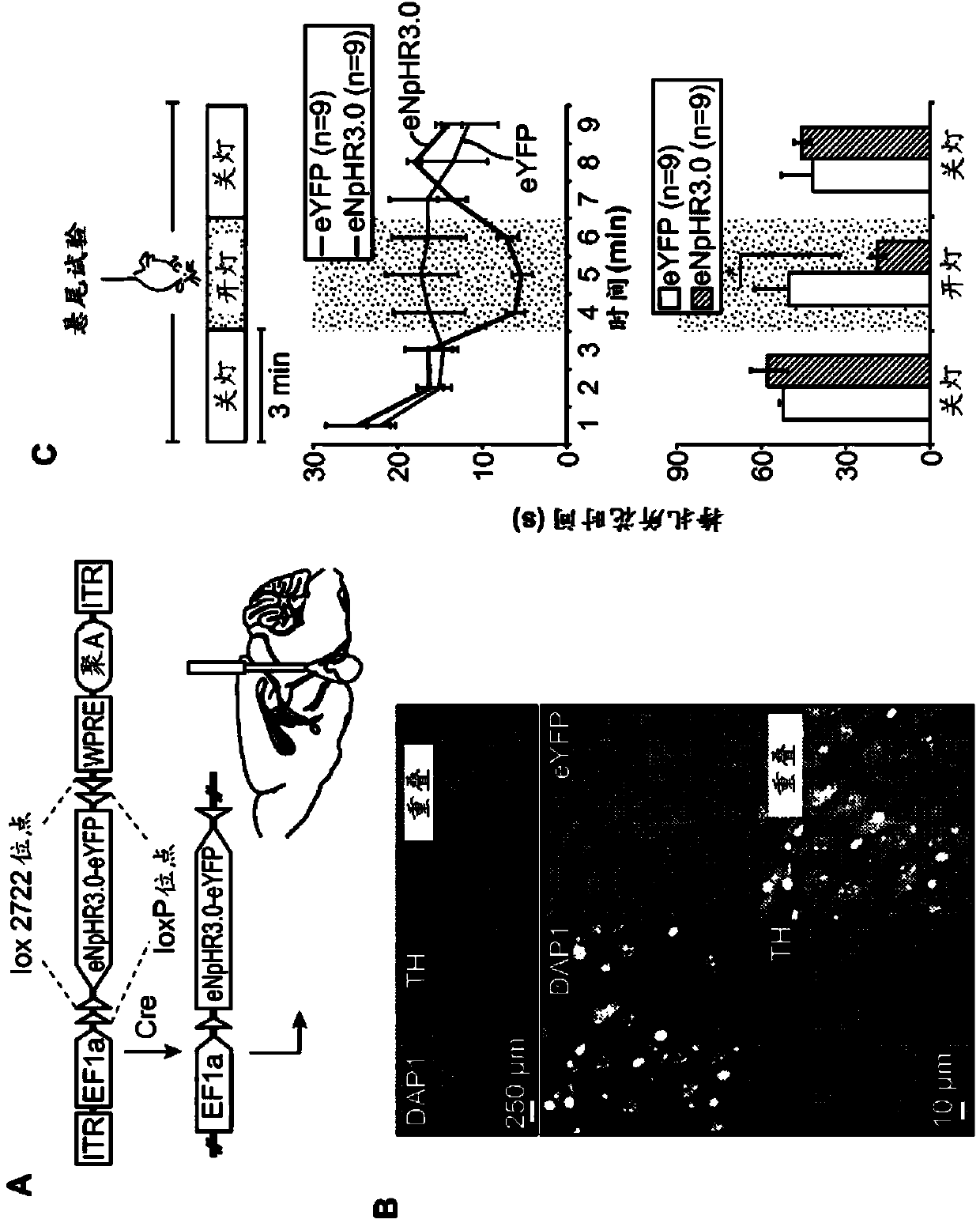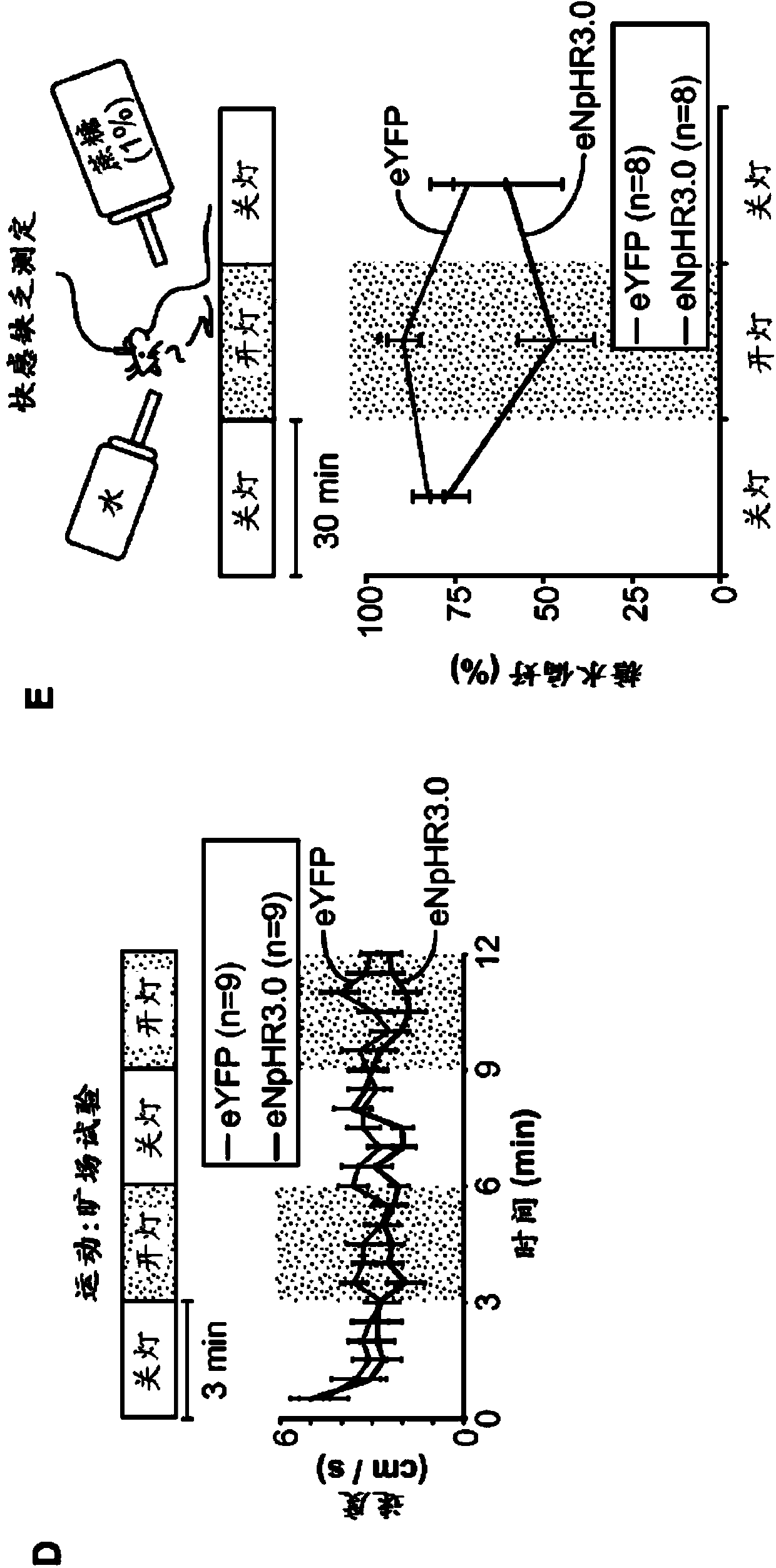Non-human animal models of depression and methods of use thereof
A technology for depression, rodents, biochemical devices and methods, diagnostics using light, applications, etc., capable of addressing adverse side effects, depression, suicide, etc.
- Summary
- Abstract
- Description
- Claims
- Application Information
AI Technical Summary
Problems solved by technology
Method used
Image
Examples
Embodiment Construction
[0033] The present disclosure provides a non-human optogenetic animal model of depression. The animal model is useful for identifying agents to treat depression and identifying targets for therapeutic strategies to treat depression.
[0034] Nonhuman Animal Models of Depression
[0035] The present disclosure provides non-human animals that express light-responsive opsins (eg, light-responsive ion channels, light-responsive ion pumps, etc.) in animal neurons. Activation of the light-responsive opsin by exposing the light-activated opsin to light modulates animal behavior. In specific embodiments, photoactivation of a light-responsive opsin induces depression in the animal. In other embodiments, photoactivation of a light-responsive opsin alleviates depression.
[0036]In some instances, a subject non-human animal model of depression exhibits symptoms of depression in the presence of light that activates a light-responsive opsin. In other cases, the subject non-human animal...
PUM
 Login to View More
Login to View More Abstract
Description
Claims
Application Information
 Login to View More
Login to View More - R&D
- Intellectual Property
- Life Sciences
- Materials
- Tech Scout
- Unparalleled Data Quality
- Higher Quality Content
- 60% Fewer Hallucinations
Browse by: Latest US Patents, China's latest patents, Technical Efficacy Thesaurus, Application Domain, Technology Topic, Popular Technical Reports.
© 2025 PatSnap. All rights reserved.Legal|Privacy policy|Modern Slavery Act Transparency Statement|Sitemap|About US| Contact US: help@patsnap.com



